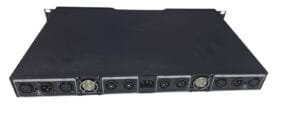Have any Questions?
Feel free to Get in touch

Martin Audio D4 Four Channels Power Amplifier
Digital amplifiers, also known as Class D amplifiers, operate by converting an analog input signal into a digital format that uses pulse-width modulation (PWM) or pulse-density modulation (PDM). This digital signal drives the output transistors, which rapidly switch on and off, feeding pulses of power to the speakers. A digital amplifier’s power stage efficiently amplifies these pulses and an in-built low-pass filter removes any high-frequency switching noise, leaving considerably amplified audio signals for our enjoyment.
KShs 60,000 Original price was: KShs 60,000.KShs 50,000Current price is: KShs 50,000.
Feel free to Get in touch

Martin Audio D4 Four Channels Power Amplifier
Digital amplifiers, also known as Class D amplifiers, operate by converting an analog input signal into a digital format that uses pulse-width modulation (PWM) or pulse-density modulation (PDM). This digital signal drives the output transistors, which rapidly switch on and off, feeding pulses of power to the speakers. A digital amplifier’s power stage efficiently amplifies these pulses and an in-built low-pass filter removes any high-frequency switching noise, leaving considerably amplified audio signals for our enjoyment.
Only logged in customers who have purchased this product may leave a review.
We are located at Luthuli Avenue on Luthuli Trading Complex Building first floor Shop LU7 Opposite Kamae Lane & Luthuli Avenue Junction Nairobi Kenya
info@sdfamilyltd.co.ke
Reviews
There are no reviews yet.